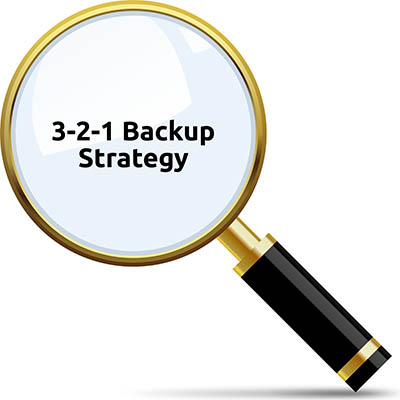

MSPs can provide a range of services, from proactive monitoring and maintenance to backup and restoration in the event of a disaster. Managed Service Providers are the first line of defense for many businesses when it comes to data security. This article will explore the 3-2-1 rule and other strategies that MSPs can use to maximize data protection and help their clients stay protected as they scale their businesses. The answer lies in following the 3-2-1 backup rule and other best practices for data protection. So, how can MSPs ensure that their clients' data is protected against disaster? MSPs (Managed Service Providers) play a critical role in keeping the wheels of commerce spinning by protecting clients' data and providing continuity of operations in the case of data loss.

Unfortunately, that ubiquity also means that businesses face an ever-growing threat of data loss due to system malfunctions, malicious attacks, or natural disasters. Today, digital devices and the data they generate have become indispensable assets to the global economy. Storing all your eggs in one basket just doesn’t cut it.When the first computers came to market in the 1970s, futurists, economists, and sci-fi writers alike began to predict how the machines would shape our lives and the future of commerce. Regardless of how much your data is important to your business, you should consider diversifying the ways in which you backup your data.

ConclusionĪdopting the 3-2-1 rule is a great start towards getting your data backed up. A key thing to consider when choosing backup strategies is the level of risk that your business may be subject to if you have such strategies in place versus if you don’t. Based on the nature of your business, you should consider a strategy that suits your needs. Such strategies might consider other redundancies like multiple off-site backups or lack of off-site backups at all. There are many other strategies that do the trick. It’s important to keep in mind that the 3-2-1 rule is just a best practice, it’s not cast in stone. The essence of following this rule cannot be understated as far as the security of your data is concerned, regulatory requirements, not to mention the potential for data loss, for your business. Just having a single backup for your data is not enough to protect you in the event of a disaster.

With it, you can diversify your backup strategy by selecting multiple off-site backup locations on any cloud provider preferable to your business and that is for both your databases and any other kind of file you wish to backup. Whichever the case, a cloud backup solution should immediately come to mind when you think about your off-site backups.Ĭonsidering a cloud backup solution like Backup Ninja will save you the hustle of choosing the locality of the backups. On the other hand, you should have an off-site backup that should save you from other severe eventualities such as fire, flood, or natural calamities. As you try to recuperate from losing access to your operational data, the first copy of your on-site backup should be fairly up to date to the extent that your data loss is fairly minimal. The reason being, the two on-site backups are simply having a way for you to have quick access to your data, should anything happen to your operational data. Having two copies of your data on-site and one off-site makes a lot of sense. Also, you should keep a backup copy off-site.The copies should be stored on two separate media.That you should have at least three copies of your data.The 3-2-1 rule for backups simply entails the following: In this blog, we talk about what it entails. In a paper from the United States Computer Emergency Readiness Team, Carnegie Mellon recommended the 3-2-1 method. The 3-2-1 rule for backups is a fairly old strategy for backups though many businesses don’t pay attention or don’t even realize how much it could save businesses in the event of a disaster. Your backup strategy is key to saving your business from eventual disasters. Suffice to say, recent statistics about backups show that backup strategies are lacking for many businesses.


 0 kommentar(er)
0 kommentar(er)
